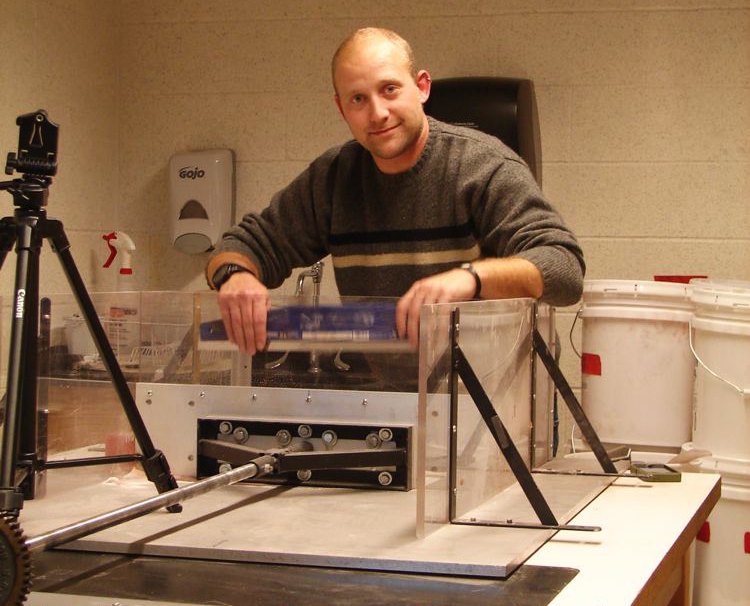
 Influence of mechanical stratigraphy on
thrust belt morphology in physical models
Influence of mechanical stratigraphy on
thrust belt morphology in physical models
 Influence of mechanical stratigraphy on
thrust belt morphology in physical models
Influence of mechanical stratigraphy on
thrust belt morphology in physical modelsStecker, E. C., and Tindall, S. E., 2012, Influence of mechanical stratigraphy on thrust belt morphology in physical models: Geological Society of America – Northeast Section Meeting in Hartford, CT (18–20 March 2012), Vol. 44, No. 7, p. 238.
 Physical
analog models show that structural geometry of fold-thrust belts is
influenced by lateral and vertical differences in elastic mechanical
layering that reflect facies changes in sedimentary strata. Three
physical models were designed, each composed of horizontal layers of
dry silica sand (σ0 ~102 Pa) and powdered kaolinite (σ0 ~104 Pa)
with a total stratigraphic thickness of 5cm, representing
approximately 5km of sedimentary rock. Half of each model provided a
control composed entirely of layers of dry sand, while the other
half consisted of kaolinite layers interspersed with layers of sand.
Models were constructed in a 60cm x 60cm compression box with one
moving wall. Overlapping plastic sheets constituted the base of each
model and acted as a detachment to localize deformation across the
center of the box rather than along the moving wall. Each model
experienced 8cm of horizontal shortening at a rate of 4cm/hr.
Physical
analog models show that structural geometry of fold-thrust belts is
influenced by lateral and vertical differences in elastic mechanical
layering that reflect facies changes in sedimentary strata. Three
physical models were designed, each composed of horizontal layers of
dry silica sand (σ0 ~102 Pa) and powdered kaolinite (σ0 ~104 Pa)
with a total stratigraphic thickness of 5cm, representing
approximately 5km of sedimentary rock. Half of each model provided a
control composed entirely of layers of dry sand, while the other
half consisted of kaolinite layers interspersed with layers of sand.
Models were constructed in a 60cm x 60cm compression box with one
moving wall. Overlapping plastic sheets constituted the base of each
model and acted as a detachment to localize deformation across the
center of the box rather than along the moving wall. Each model
experienced 8cm of horizontal shortening at a rate of 4cm/hr.